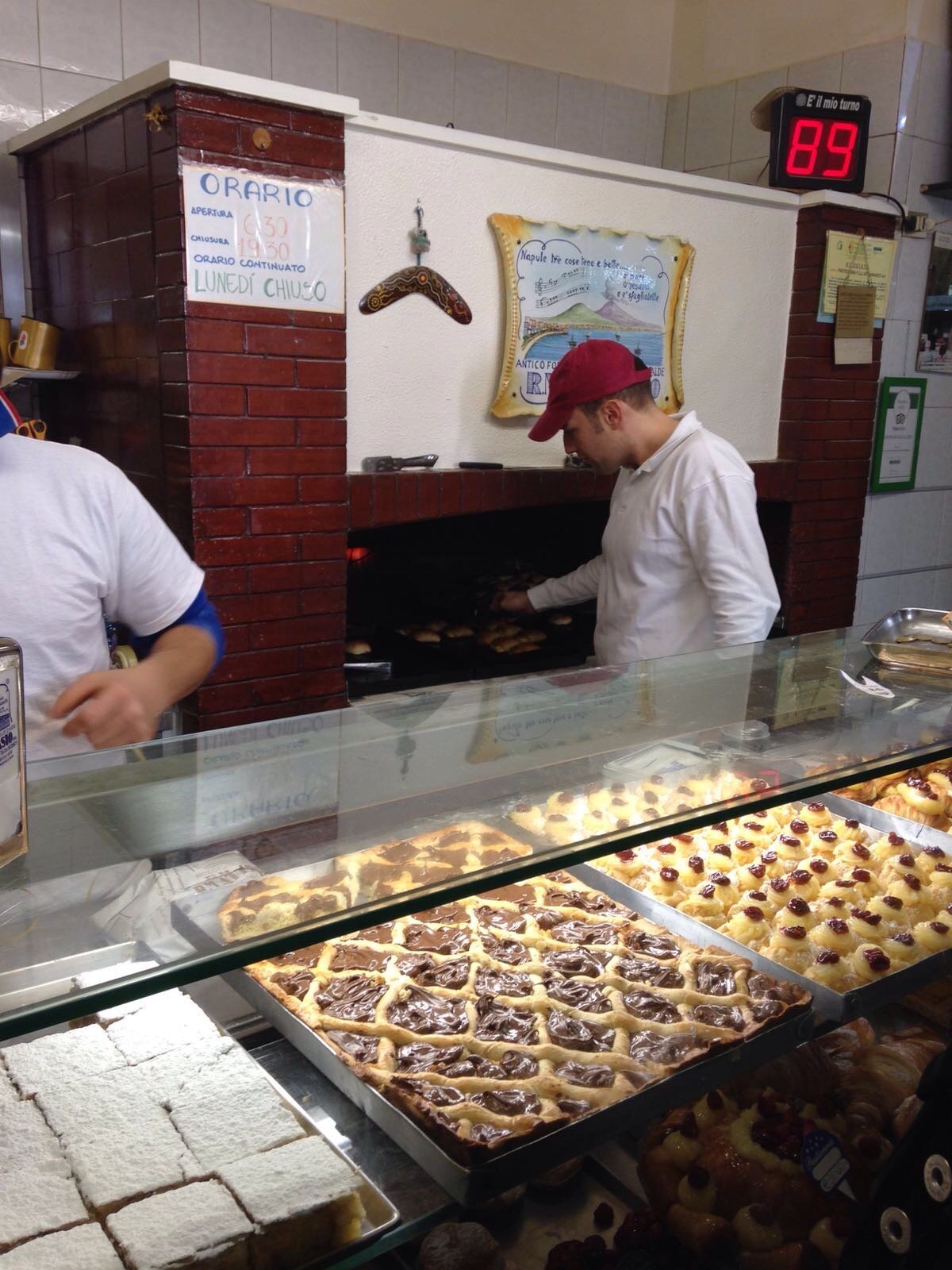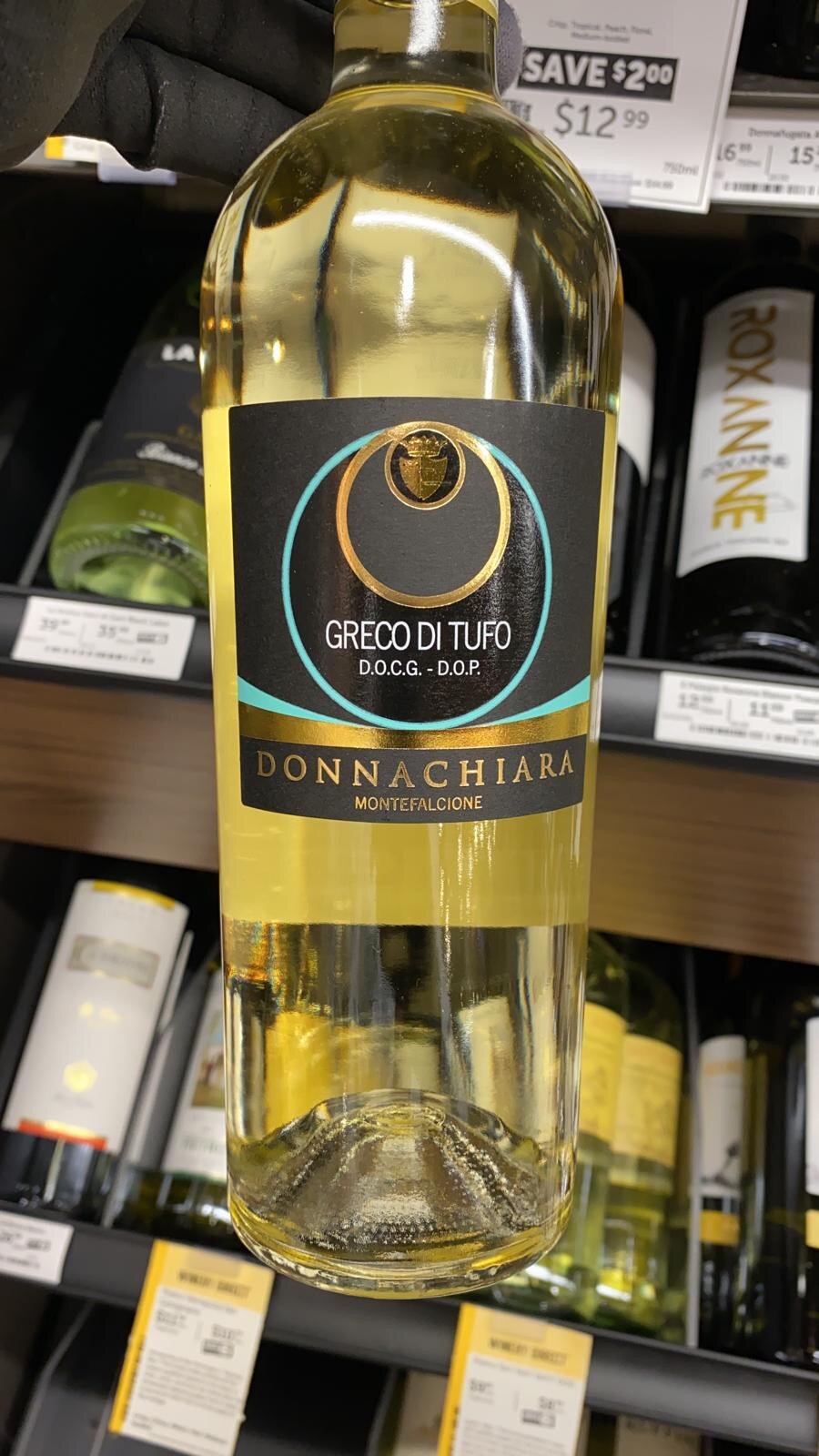Food and Wine
Now, a word on Neapolitan cuisine: pizza. There is one word. Jokes aside, I would make pizza the priority in this city. I recommend two of the most famous pizzerie in the restaurants post, and although they have become so popular that they have opened locations in Rome and the USA, the experience is different in Napoli, and I encourage you to try both of them. Neapolitan pizza is known for having thicker crust (pizza alta) than Roman pizza, but there is more than that. Neapolitan pizza has Traditional Speciality Guaranteed (TSG) status, and it must be made with particular regional products (San Marzano or Pomodorino del Piennolo del Vesuvio tomatoes and Mozzarella di Bufala Campana); you can read more about it here. Another dimension of La Cucina Napoletana is, as my friend Lauren likes to say, the ‘fried stuff.’ Fried street food is a venerated tradition, and you should start your exploration with a cuoppo; this is a paper cone filled with a variety of fried seafood, vegetables and even meat. You will see vendors around the streets of Napoli. The fried treats pictured in the cover photo to this post also features one of my favorite fried delicacies, the pizza fritta, and specifically, the montanara variety. The mini pizzas are made with deep fried dough. A calzone, the half moon stuffed variety of pizza also originates from the Campania region.
Besides the gluttonous pizza and fritti, the regional cuisine features a variety of fresh fish, so I have recommended a tried and true trattoria that does not disappoint for regional dishes besides pizza. You will not go wrong with a seafood pasta dish such as spaghetti alle vongole (clams) or cozze (mussels). If you prefer ‘short’ pasta, like I do, paccheri, a long flat tube-like pasta, is a traditional pasta from the region and suits a fresh seafood pasta very well.
Neapolitan cuisine is celebrated for desserts and you will see a plethora of pasticcerie (pastry shops) around the city of Naples. The baba and sfogliatelle are some of the most famous types. The baba is a spongey cake with a distinctive mushroom type shape; it is also soaked in a liqueur, most often rum. Read more about the sfogiatelle at Attanasio in the restaurants post. Of course, the dessert liqueur, Limoncello, is most famously produced in the Campania region. All along the Amalfi coast, you will see massive lemons hanging on trees, which are used to produce the famous after dinner drink. Love it or hate it, it will probably be offered in this region. You can visit a petit little factory in the heart of Naples, becoming increasingly popular, called Limone for a tour and a tasting of some more ‘quality’ stuff. This factory is located in the Decumani area.
Wine
In terms of wines from this region Aglianico, just like in the neighboring Basilicata, is popular. The grape was supposedly brought over by the Greeks, boasting an ancient history. It is full bodied and quite tannic, worthy of aging much like the Nebbiolo grape (used to make Barolo). That said, it can be manipulated to a lighter, easier to drink style, by producers as well. Find out more here. My somm friend Frank pointed me towards the Piedirosso, an alternative to Aglianico known to be lighter.
For regional white wines, I also like the white Greco di Tufo; a DOCG of the Campania wine region in southern Italy. In fact, I am a big fan of this varietal. My brother (who works in wine) gifted me a bottle for Christmas with a very touching card, explaining why he thought the flavor profile was perfect for my tastes, and he was right. The “sulfur- and tuff-rich volcanic and clay soils… lend the wine its perfume and mineral complexity” according to the Wine Searcher website. Another white from the region is Fiano; I have enjoyed many of them, but some are a bit too ‘tropical’ tasting for me.


